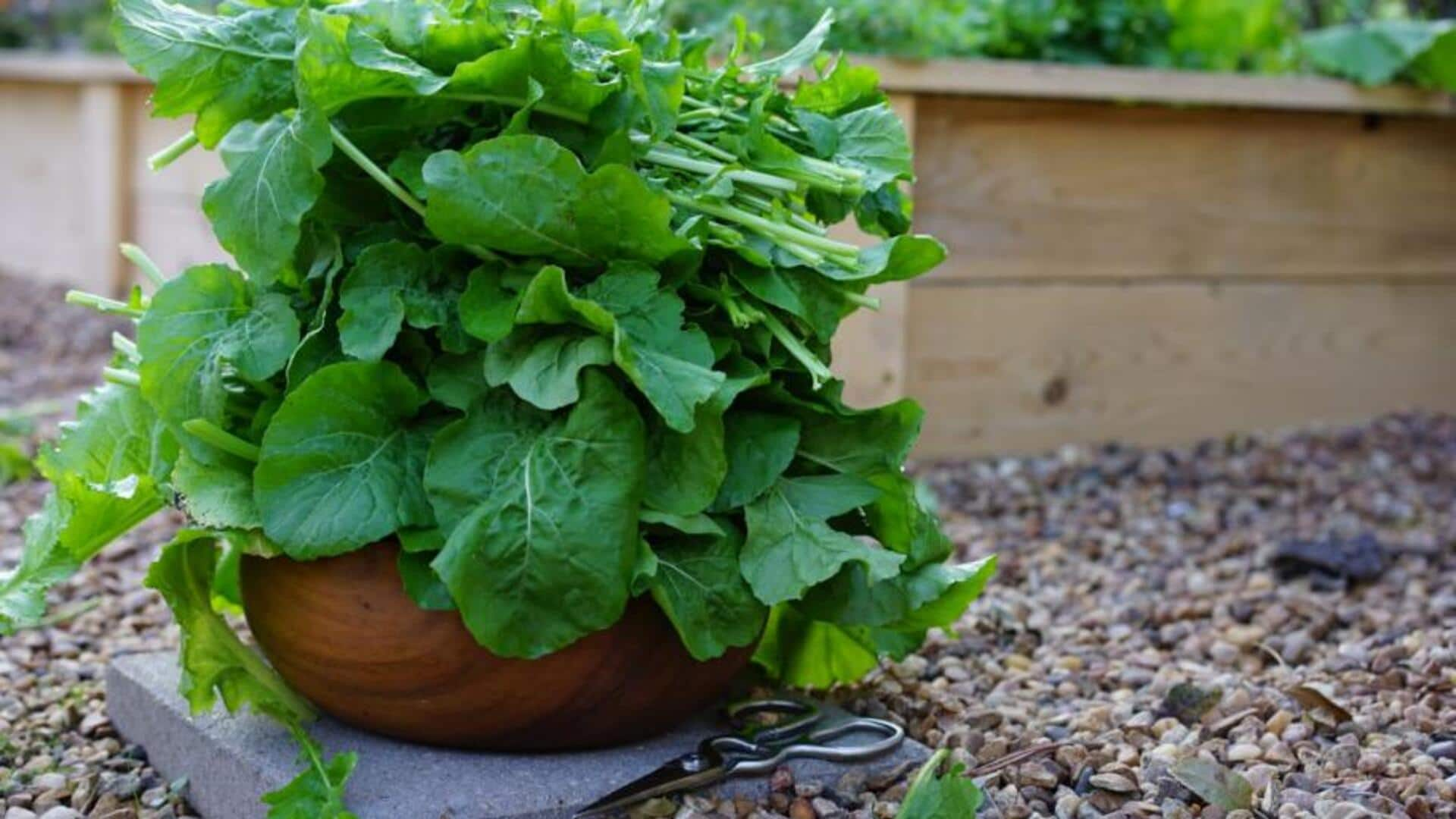
How to grow arugula at home
What's the story
Growing arugula indoors can be a rewarding experience, providing you with fresh greens year-round with the least effort. Not only is this leafy green known for its peppery flavor, but it also offers a range of nutritional benefits. With a little bit of effort, you can have a continuous supply of arugula without requiring a sprawling garden space. Here's how.
Container selection
Choosing the right container
Selecting an appropriate container is crucial for indoor arugula cultivation. Opt for pots that are at least six inches deep so that roots get enough room to grow. Ensure that the containers have drainage holes to prevent waterlogging, which can harm the plants. Using trays underneath can help catch excess water and keep your indoor space clean.
Light requirements
Ensuring adequate lighting
Arugula needs adequate light to grow indoors. Position your containers near a south-facing window where they get a minimum of six hours of sunlight per day. If natural light is scarce, use grow lights as a supplement. Place these lights around 12 inches above the plants and keep them on for 12-14 hours every day.
Soil preparation
Maintaining optimal soil conditions
The soil in which you grow arugula should be well-draining and rich in organic matter. A potting soil-compost mix serves this purpose well. Keep the soil pH between six and seven for optimal growth conditions. Check the moisture levels regularly; keeping the soil consistently moist but not soggy is the key.
Proper hydration
Watering techniques
Watering is key to growing healthy arugula indoors. Water your plants when the top inch of soil feels dry to touch but refrain from overwatering, as it may lead to root rot problems in the long-run. Using room temperature water helps in avoiding shock from sudden temperature changes during watering sessions.